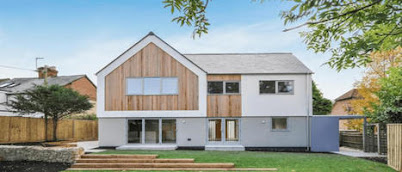It Is Easier to Integrate a Timber Frame House with Appliances
All utilities are easily integrated into the walls of a timber frame house, allowing for space savings and a sense of spaciousness. Concrete houses, on the other hand, due to their vast size, restrict residential living area.
Unlike some materials, which require cushioning grommets to protect cable insulation during installation and limit long-term damage to plumbing owing to expansion and contraction or corrosion, Timber Frame house can be easily drilled to attach plumbing and electrical cables.
Each frame building style has its own set of disadvantages, and many people worry that timber frame houses will not be as long-lasting as concrete constructions.
Because it has a greater R-value than many other materials, timber framing helps insulate your home. This implies it does not function as a 'thermal bridge,' transferring energy (heat) from one side of a wall to the other.
All typical building materials have the same embodied energy as wood. This is a measurement of the energy required to transform tree wood into framing lumber (which is typically produced by greenhouse gas-emitting generators).
After all, many antique structures are primarily constructed of wood. You also won't have to worry about the fallacy that a timber frame house will cost more to insure than a concrete block building.
The usage of wood in Timber Frame house reduces the amount of greenhouse gases in the atmosphere. Carbon is taken from the atmosphere by a developing tree and makes up around half of its dry weight. Buildings made of wood store carbon for as long as the building is standing or until the wood is reused or recycled.
Concrete house owners, on the other hand, are more likely to be exposed to the building's high humidity levels. The choice of materials used in construction has a big impact on the formation of mold and moisture, as well as pest infestation, so it's critical that the timber frame house is made with high-quality wood that's been treated for fire and bugs.


Comments
Post a Comment